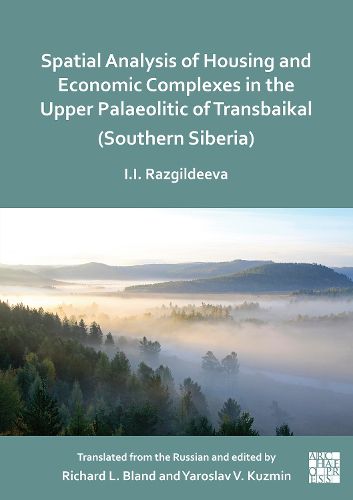Readings Newsletter
Become a Readings Member to make your shopping experience even easier.
Sign in or sign up for free!
You’re not far away from qualifying for FREE standard shipping within Australia
You’ve qualified for FREE standard shipping within Australia
The cart is loading…






Spatial Analysis of Housing and Economic Complexes in the Upper Palaeolithic of Transbaikal (Southern Siberia) provides a brief overview of the history in the development of methods of spatial analysis in Russian archaeology in the context of studies of Palaeolithic dwellings. The results of an analysis of the spatial organisation of the Upper Palaeolithic complexes in Transbaikal region are presented in detail. The concept of contextual analysis is introduced as applied to the archaeology of ancient settlements. The planigraphy of housing and economic structures and, in general, the cultural horizons of the multi-layered Studenoe 2 site are examined in detail. An ethnographic block is presented separately, characterising the details of the frame dwellings of the northern peoples based on the rich photographic collection of the Russian Ethnographic Museum. This book is for archaeologists, historians, and Quaternary geologists, including undergraduate and graduate students, and academics.
$9.00 standard shipping within Australia
FREE standard shipping within Australia for orders over $100.00
Express & International shipping calculated at checkout
Spatial Analysis of Housing and Economic Complexes in the Upper Palaeolithic of Transbaikal (Southern Siberia) provides a brief overview of the history in the development of methods of spatial analysis in Russian archaeology in the context of studies of Palaeolithic dwellings. The results of an analysis of the spatial organisation of the Upper Palaeolithic complexes in Transbaikal region are presented in detail. The concept of contextual analysis is introduced as applied to the archaeology of ancient settlements. The planigraphy of housing and economic structures and, in general, the cultural horizons of the multi-layered Studenoe 2 site are examined in detail. An ethnographic block is presented separately, characterising the details of the frame dwellings of the northern peoples based on the rich photographic collection of the Russian Ethnographic Museum. This book is for archaeologists, historians, and Quaternary geologists, including undergraduate and graduate students, and academics.